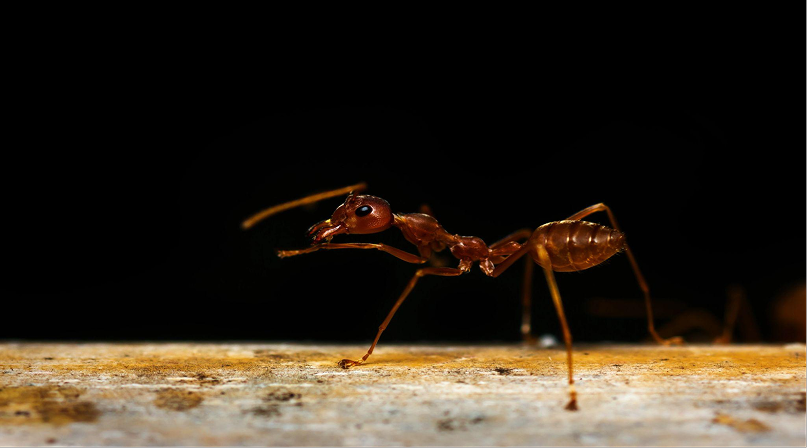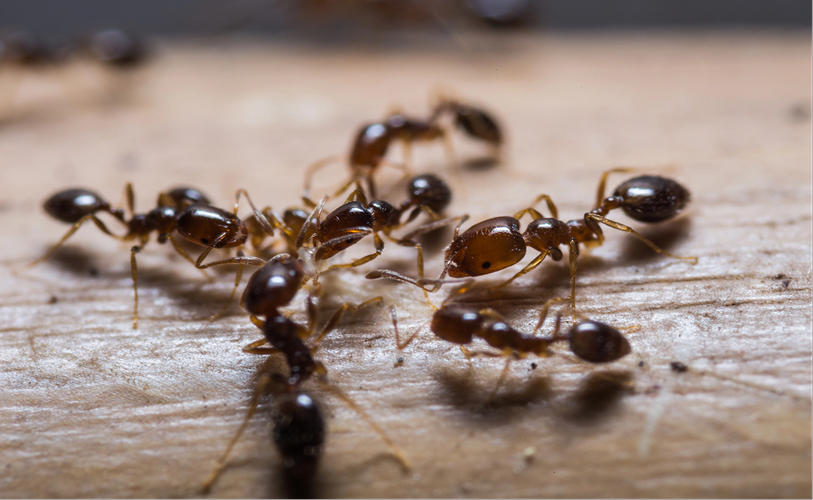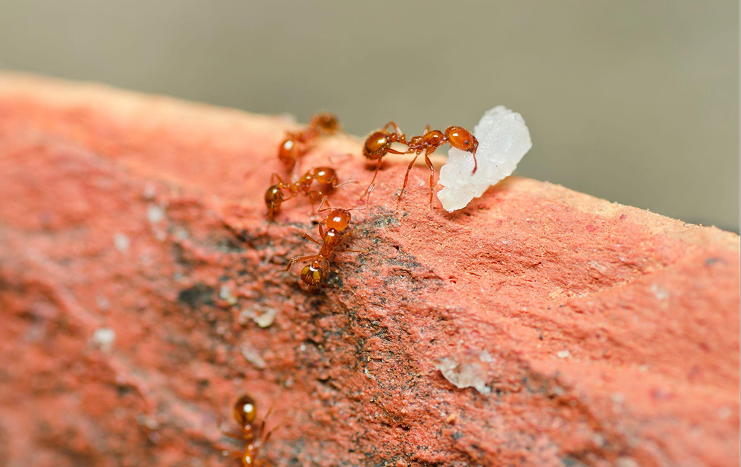Even though all ants might look alike at first glance, as they march in beautifully orchestrated formation across your yard or countertop, the reality is anything but. There are thousands of species of ants around the world, but each one has its own unique calling card.
Two of the most often confused species are army ants vs. fire ants. Both can be unsettling to encounter, but the two species are wildly different in their habitats, habits, and the threats they pose.
In fact, residents of Simpsonville, SC and the Upstate area often find themselves caught between identifying and tackling these ant invasions, not sure what steps to take next because they just aren’t sure what kind of pest they’re dealing with. In this post, we’ll break down the key differences and similarities between army ants vs. fire ants, and show you the most effective way to take action against both.
What Are Army Ants?

Army ants are often considered the vagabonds of the insect world. Unlike most ant species, they don’t live in permanent nests, instead preferring to live their lives on the move.
These ants set up temporary encampments called “bivouacs.” Using their bodies to form the shelter walls, these ants march through the environment in vast columns, consuming insects, earthworms, and even small animals that might lie in their path.
Living a nomadic lifestyle, army ants never settle down. Their massive swarms carry the young and the queen right along with them.
This predatory behavior serves a natural purpose, as they serve as nature’s cleanup crew. They hunt as a group, making them highly efficient. The good news for you is that they’re commonly found in tropical regions and are rare in areas like Simpsonville. Although the climate here is warm and favorable, army ants live it even hotter. That said, you may encounter some species that exhibit certain behaviors. Enter: the fire ant.
What Are Fire Ants?

Fire ants are a completely different story than army ants. If you’ve ever stepped on a dirt mound and then felt a sudden flurry of bites and painful stings, you’ve probably already come up close and (painfully) personal with these insects.
Red imported fire ants, which originally hail from South America, have become an invasive species across the southeastern United States. They’re known for their aggression and their nasty sting, making them a pest to watch out for.
To tell the difference between other ant species (and to return to the debate over army ants vs. fire ants), let’s talk about some key characteristics of the latter.
First, their housing. Fire ants typically build dome-shaped mounds of soft soil, around 18 inches or so in diameter. Unlike regular ant nests, fire ant mounds don’t have a visible entrance hole.
These ants react aggressively to any disturbances and tend to sting en masse. Beyond just being painful, this can create serious reactions for those who are allergic or otherwise sensitive.
Fire ants thrive in sunny, open spaces, but don’t require a tropical climate to thrive. This makes Simpsonville lawns and parks the perfect setting for their colonies.
It’s also important to note that fire ants aren’t nomadic like army ants. Instead, they maintain fierce control over their mounds and they aren’t afraid to bite or sting intruders. That, unfortunately, includes you.
Army Ants vs. Fire Ants: How Dangerous Are They?
As you’re comparing army ants and fire ants, the real question most people have on their minds is, “Which one should I worry about more?”
For most residents of Simpsonville and the greater Upstate area, fire ants are the bigger concern. We just aren’t as likely to encounter army ants here, so they’re more of a curiosity than a threat. While their coordinated hunting swarms might appear frightening, they don’t typically interact with humans or come into homes. They’re more interested in eating the insects in the soil than causing you personal harm.
Fire ants, on the other hand, bring their aggressive tactics directly to your yard. Their venomous sting can cause painful pustules along with severe reactions like anaphylaxis in some people. Beyond human harm, fire ants can also disrupt local wildlife.
Why You Need Professional Extermination

If you’ve identified an ant issue of any kind in your yard, you might be tempted to reach for an over-the-counter pesticide and try to go it alone. Trust us, that approach seldom works when it comes to fire ants. These pests are tough to eliminate and will often relocate or create satellite colonies when they feel threatened.
Turning to Action Pest instead means you’ll get access to safe, thorough treatment. With our effective techniques and trained technicians, we’ll eliminate the ants without leaving your lawn covered in harmful chemicals. Whether you’re dealing with a fiery mound of angry ants or some other pest, expert extermination is your best bet.
When it comes down to the battle between army ants vs. fire ants, the winner is clear: fire ants are the pests you need to worry about here in Simpsonville, SC. Knowing the differences between the two (as well as the differences between fire ants and other ant species) is key. Knowledge is power and will leave you feeling more prepared when pests invade your space. The good news? You don’t have to go it alone. Action Pest is here to help. But you do need to act fast. Don’t wait until the ants have taken over. Contact us today to schedule your next inspection!
